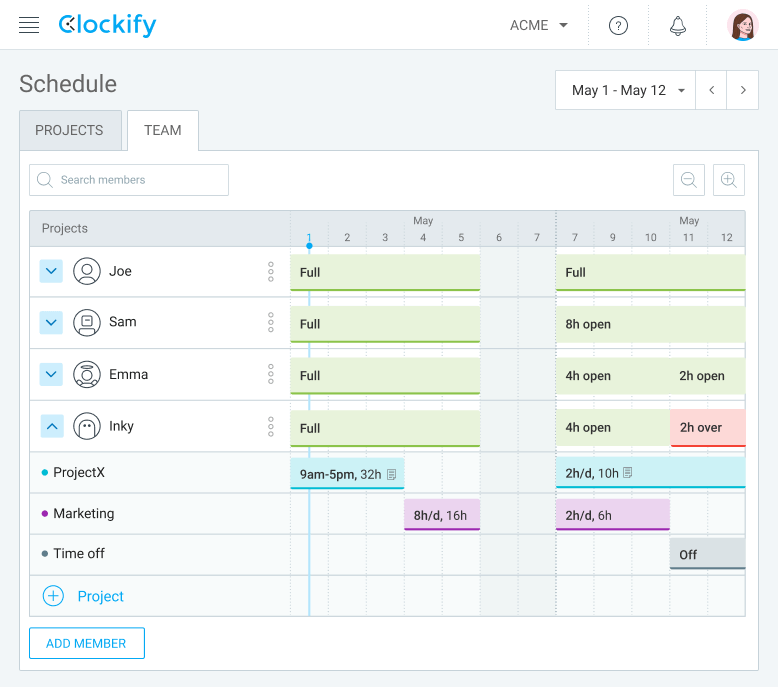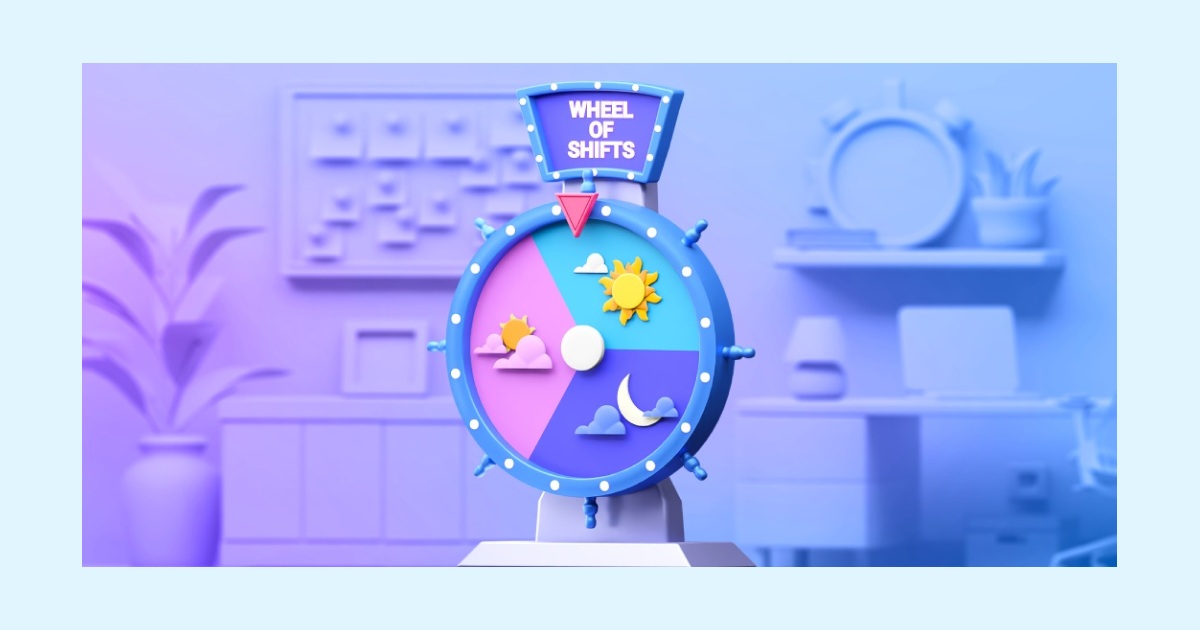Part-time vs. Full-time Employment: Understanding the Difference
Last updated on: October 30, 2023
If you’re in-between changing careers, or you’re just thinking of looking for a side job, you might be wondering which one is better — part-time or full-time.
On a similar note, owning a business or managing a team does not spare you the same thoughts. You still need to work out a perfect employment strategy and see which type of employment offers more advantages to your business.
But what is the best decision if you’re in two minds about part-time and full-time employment?
Well, this guide is here to connect the dots and help you make an informed decision — whether you’re hiring or about to be hired.
We’ll walk you through all the ins and outs of part-time and full-time employment and cover:
- The definitions and laws regulating part-time and full-time employment,
- The pros and cons of part-time and full-time jobs,
- Tips from experts for managing both part-time and full-time employees, and
- FAQ about part-time vs. full-time employment.

Table of Contents
What is considered part-time?
Broadly speaking, part-time refers to a type of employment agreement under which employees are expected to work fewer hours than what is considered a full-time schedule.
The exact sum of hours a part-time employee in the US should work per week usually depends on the employer’s policy since the Fair Labor Standards Act (FLSA) leaves it up to the employer to define the number of hours a part-time employee can work.
What is considered full-time?
Similarly to part-time, full-time is defined as an employment agreement under which employees are expected to work more hours than what is considered a part-time schedule.
Again, the exact number of work hours a full-time worker is expected to put in per week depends on the terms stated in the employer’s policy. The FLSA does not define the number of hours an employee needs to work per week to be classified as a full-time worker.
However, for the purpose of determining whether an employer is required to offer minimum essential health coverage, the IRS defines full-time employees as workers who spend at least 30 hours per week or 130 hours per month working. This definition could be relevant if you are a large employer (employing 50+ full-time workers), but we’ll get into more detail on this matter later on.
What is the difference between working full-time and part-time?
One of the main differences between full-time and part-time employment is the number of hours worked — full-time employees tend to work more than 35 hours per week, and part-time employees tend to work less than 35 hours per week. However, these work hours are actually not federally regulated — it’s just how it usually is in practice.
Here are some other differences, listed in the table below:
| Part-time employees | Full-time employees |
|---|---|
| Usually work less than 35 hours/week | Usually work more than 35 hours/week |
| Receive hourly wage | Receive salary |
| Mostly not eligible for benefits | Usually eligible for employee benefits |
| Have a flexible schedule | Have a fixed schedule |
Let’s take a look at all the above mentioned differences between full-time and part-time in more detail.
Difference #1: Full-time employees work more hours per week
Even though the federal law does not regulate neither part-time nor full-time hours, the research by the US Bureau of Labor Statistics shows that the majority of US part-time employees work less than 35 hours per week.
According to the same research, full-time employees spend more than 35 hours per week working.
Difference #2: Part-time employees tend to be paid by the hour
Part-time employees most frequently work an hourly position, therefore, receive wages for each hour of work they put in. They are usually required to log or track their work hours to ensure they get paid correctly.
Full-time employees, on the other hand, often receive a flat salary regardless of the number of hours they work. Even though, in some cases, full-time employees could be offered an hourly rate, the majority of them are salaried employees.
💡 Clockify Pro Tip
If you’re not sure what exactly the difference between hourly and salaried employees is, this blog post gets to the bottom of it:
Difference #3: Most part-time employees are not eligible for benefits
Apart from statutory benefits (Social Security, Medicare, unemployment insurance, and workers’ compensation insurance), US employers are not required by law to offer any other additional benefits to part-time workers, such as employer-funded health insurance, retirement benefits, or PTO.
Similarly, full-time employees working for a small employer (companies with less than 50 full-time employees) might not receive any benefits on top of those mandated by the federal and state governments. However, according to the ACA’s (Affordable Care Act) employer-shared responsibility provisions, employers with more than 50 full-time employees (including the full-time equivalent employees) are required to cover minimum health insurance.
Furthermore, statistics show that full-time workers are more likely to receive additional employer-funded benefits. Namely, according to a US Bureau of Labor Statistics news release, 81% of full-time workers had access to retirement benefits in March 2022, whereas only 43% of part-time workers had the same perk.
💡 Clockify Pro Tip
Certain states might have introduced different benefits regulations that could impact your obligations towards part-time and full-time employees. Make sure to be informed on all the relevant labor laws in your state:
Difference #4: Full-time employees tend to have a fixed schedule
Part-time employment usually comes hand in hand with instability in work schedules. Even though the changes regarding work hours depend on the terms agreed on in their employment contract, part-time workers frequently work in rotating shifts — which leaves enough room for adjustments.
The majority of full-time employees, on the other hand, work on a fixed schedule — putting in a pre-defined number of hours week after week. Some employers may choose to offer their full-time workers a flexible schedule, but they’d still be required to work for a set number of hours throughout the week.
💡 Clockify Pro Tip
Some businesses need to operate 24/7, so coming up with a perfect work schedule under those conditions could be a challenge on its own. Take a look at one of the most efficient rotating schedules you could introduce right away:
Why do the definitions of full-time and part-time employment matter?
Although federal law does not distinguish between full-time and part-time employment, being aware of the acts and regulations that might impact your workers’ status helps you avoid potential lawsuits.
Also, if you are an employee considering a part-time or a full-time position, knowing the definitions could help you make an informed decision when selecting your perfect type of employment and even claim your rights when necessary.
Let’s go over all the reasons for why the definitions of full-time and part-time matter in more detail.
Reason #1: Misclassification could result in IRS fines
As we’ve already mentioned, under the ACA, employers with 50 and more full-time employees (workers who spend at least 30 hours/week or 130 hours/month working), including the full-time equivalent employees, are classified as applicable large employers (ALE). Therefore, they need to offer minimum health insurance to all their staff. Failure to do so could result in serious fines and penalties from the IRS.
However, since the FLSA leaves enough room for employers to distinguish between full-time and part-time workers as they see fit, the employer handbook definition of full-time employees might differ from the one provided by the ACA. Still, having their own interpretation of full-time and part-time employment does not absolve employers of legal liability.
Reason #2: Incorrect definitions might lead to criminal penalties
Most US employers are generally not required to provide benefits such as holiday pay, vacation leave, or covered retirement plans. Still, similar to minimum health insurance, there are certain exceptions to this.
Namely, according to the Employee Retirement Income Security Act (ERISA), employers who already offer pension plans to their full-time employees must allow their part-time employees who work more than 1,000 hours/year (20 hours/week) to participate in a retirement plan as well.
Let’s say an employer decided to offer retirement benefits to full-time employees only. However, their employee handbook defines part-time employees as working 30 hours per week. Following ERISA, this employer is violating the federal act and could be subject to civil or criminal penalties and lawsuits for withholding benefits from their employees.
Part-time employment: Pros and cons for employers
As it is with all types of employment, each comes with its own share of perks and downsides. Take a look at the breakdown of some of the most common pros and cons of part-time employment you might face if you plan on hiring part-time employees.
| Pros of part-time employment for employers | Cons of part-time employment for employers |
|---|---|
| Larger pool of job candidates | Organizational challenges |
| Cost-effective | High turnover rate |
| Quicker response to customer demands | Lack of commitment |
Let’s go over both pros and cons of part-time employment in more detail so you’ll be aware of them at all times.
Part-time employment: Pros for employers
If you’re about to hire part-time workers, you’ll probably witness a handful of advantages coming with this type of employment.
Let us walk you through each benefit coming with employment of part-time staff:
- Part-time employment opens the door to a large pool of candidates — frequently, candidates looking for a part-time position already work full-time and are looking for additional income. This widens your candidate pool since you’ll be able to select from a broader group of candidates, including already employed talents experienced in their fields and part-time newbies.
- Employing part-time workers could be cost-effective — instead of mandating overtime during a busy season and having to compensate for overtime hours, hiring seasonal part-time employees could be more financially sustainable. Also, if you’re just starting out and running a business on a tight budget, you could lower your employment costs if you hired only part-time employees in the early days of your business.
- Adequate part-time staff helps meet customer expectations — if you expect your business to experience a significant increase in customer demands, hiring part-time workers who could cover time frames outside your full-time staff’s working hours could help increase customer satisfaction. Since you’ll be able to meet their demands much quicker, this will, in turn, improve customer retention and naturally grow profit.
Part-time employment: Cons for employers
On top of clear advantages that hiring part-time employees brings to light, this type of employment naturally comes with a fair number of cons.
Here are some of the most common downsides employers hiring part-time workers usually have to navigate through:
- Hiring part-time workers comes hand in hand with organizational challenges — whether you employ only part-time employees or also hire full-time workers, chances are you’ll find it challenging to ensure everyone’s available to attend important meetings and discussions at the same time. Making sure everyone’s present when key decisions are being made is especially tricky if your part-time employees work in shifts.
- Part-time employment comes with a risk of a higher turnover rate — part-time employment is usually paired with a low employee retention rate, especially in hospitality and retail industries. Also, not offering part-time employees the same benefits as full-time employees frequently leads part-time staff to go for greener pastures.
- Part-time staff could be less committed to their jobs than expected — due to the nature of their work hours and a higher chance of not being informed about every relevant decision, part-time employees are more likely to feel excluded. In turn, they might not feel committed to the company to the same extent as full-time employees.
Part-time employment: Pros and cons for employees
If you’ve been wondering whether part-time employment is the right choice for you, take a look at the table below, where we’ve narrowed down some of the most common pros and cons you should consider before accepting a part-time job offer.
| Pros of part-time employment for employees | Cons of part-time employment for employees |
|---|---|
| Flexible schedule | Variable income |
| Reduced stress levels | Potential lack of benefits |
| Better work-life balance | Unpredictable and irregular work hours |
Now, let’s explore what these advantages and disadvantages mean exactly for part-time workers.
Part-time employment: Pros for employees
Although there might not be such a thing as an ideal type of employment, part-time brings a number of benefits to employees that might be worth taking into account if you’re about to accept a part-time job offer.
These are some of the pros of part-time employment you might notice:
- Part-time workers usually have a more flexible work schedule — depending on the nature of their jobs, part-time employees may have more chances of negotiating their working hours, especially since part-time workers commonly work in shifts.
- Part-time employment positively impacts stress levels — research on work arrangements and stress levels has shown that employees who work fewer hours (including part-time workers) experience significantly lower levels of stress compared to those working in other types of employment arrangements. This is especially the case with employees working 37+ hours/week.
- Working part-time helps with achieving a better work-life balance — with reduced working hours comes more time for personal activities, therefore a better balance between personal and professional life, and an overall improved quality of work-life.
Part-time employment: Cons for employees
Apart from evident perks of working part-time, this type of employment arrangement also goes along with a number of drawbacks.
Here’s a detailed rundown of each of them:
- Part-time employees frequently have variable income — unlike full-time employees who reap the benefits of a steady income, part-time employees are usually paid by the hour. This means a part-time worker’s income could be significantly lower than usual at times when their employer’s business is going through a quiet time.
- Part-time workers might not receive employee benefits — as we’ve mentioned before, US employers are not required to offer their employees benefits beyond the statutorily required ones. Still, research by the US Bureau of Labor Statistics shows a staggering gap between the number of full-time and part-time employees with access to employer-funded health benefits. Opposed to 87% of full-time employees with health insurance benefits, only 24% of part-time workers received the same coverage in 2022.
- Part-time work schedule is commonly unpredictable — along with the benefit of working flexible hours comes a fluctuating schedule. Despite the possibility of negotiating work hours, many part-time workers struggle with the unpredictability of their work schedule. Part-time workers occupying leisure and hospitality positions, for example, commonly receive their schedules last minute — which makes it difficult to adequately structure and plan their days.
Full-time employment: Pros and cons for employers
Full-time employees bring a particular set of pros and cons to employers, and here’s a breakdown of some of the most common ones:
| Pros of full-time employment for employers | Cons of full-time employment for employers |
|---|---|
| Consistent scheduling and easier resource management | Increased payroll costs |
| Higher employee loyalty | Higher demands impact work output |
| More dedication | Higher risk of burnout |
Full-time employment: Pros for employers
After welcoming full-time employees on board, employers usually witness a handful of advantages this decision brings to light.
Let’s go over some of the most common advantages that come with full-time employment in more detail:
- Full-time employment reduces time spent on resource planning — opposed to part-time workers whose schedule sometimes depends on the workload, full-time employees usually work a fixed number of hours week in and week out. This schedule predictability reduces the time spent on planning work and managing team capacity.
- Full-time staff show high loyalty to the company — since full-time employment comes with a consistent schedule and income, full-time employees are more likely to remain loyal to the company. In fact, Gallup’s research on employee retention has shown that the lack of job stability is one of the most common reasons behind employees choosing to leave their jobs.
- Full-time employees could be more dedicated to their jobs — apart from being content with their job stability, full-time employees are much more likely to be committed to their jobs. When they’re provided with a clear career advancement roadmap coupled with internal training possibilities, employees know exactly which areas to focus on and are more likely to remain committed to their roles.
Full-time employment: Cons for employers
Along with clear advantages comes a certain amount of drawbacks that frequently come hand in hand with full-time employment.
If you’re in two minds about hiring full-time employees, take a close look at the cons of full-time employment to see how they stack up against its advantages:
- Full-time employment comes with increased payroll costs — unlike part-time workers who get paid by the hour worked, full-time employees usually earn a steady salary — they need to be paid even if the business is slow and their workload is lower than usual. Compared to issuing part-time employees’ paychecks, this would mean that your payroll costs might not always reflect your business profits.
- Higher demands could impact full-time employees’ work output — even though the risk of experiencing burnout does not depend on the employment contract, full-time employees’ positions usually come with higher demands. If the demands are unrealistic or too high, this could negatively impact full-time employees’ motivation, interest, and energy levels — all ultimately leading to lower productivity levels than expected.
- Full-time employees are at high risk of burnout — along with high expectations and overall loss of motivation comes an increased risk of burnout. When symptoms of burnout knock on your workspace doors, there’s more at stake than your full-time employees’ productivity levels. If not adequately addressed, the prolonged burnout could even lead your business to lose its stellar full-time employees, regardless of the job stability that comes with their positions.
Full-time employment: Pros and cons for employees
If you’re about to sign a full-time employment contract, and you’re not sure whether it would be the right fit for you, take a look at all the pros and cons of full-time employment you could encounter as an employee.
| Pros of full-time employment for employees | Cons of full-time employment for employees |
|---|---|
| Stable income | Mental exhaustion |
| Higher possibility of covered benefits | Work-life balance harder to achieve |
| Career advancement opportunities | Less flexibility |
Full-time employment: Pros for employees
Being familiar with all the benefits of full-time employment could help you make the right decision if you are wondering whether you should be looking for a full-time job.
Here is a detailed overview of some of the most common pros of full-time employment you can expect as an employee:
- Full-time employment comes along with a stable income — since full-time workers usually earn fixed salaries that do not depend on their workload, their monthly earnings are easily predictable. Precisely due to this fact, full-time employees find it much easier to manage, plan, and keep track of expenses.
- Full-time employees are usually offered covered benefits — despite the fact that the US employers are not obligated to offer paid benefits to their employees, as the US Bureau of Labor Statistics research we’ve mentioned earlier has indicated, full-time employees commonly receive employer-compensated benefits.
- Working full-time brings more career advancement opportunities — research about equality in the workplace has shown that full-time employees have more advancement opportunities than their counterpart colleagues. In fact, out of 1,150 surveyed companies, only 45% claim that they offer equal career advancement prospects to both part-time and full-time employees.
Full-time employment: Cons for employees
Even though full-time employment appears to be a more stable job opportunity when compared with part-time employment — it still comes with a fair share of drawbacks.
Let’s go over some of the disadvantages of full-time employment you could run into as an employee:
- Full-time employees could be more prone to mental exhaustion — high or unrealistic expectations matched with longer working hours are a slippery slope to mental exhaustion, especially when a full-time employee is exposed to chronic stress and physical exhaustion for long periods of time.
- Full-time employment does not leave enough room for work-life balance — compared with part-time employees who, by definition, work shorter hours, full-time employees are left with much less time to engage in personal activities. Having less hours to allocate to each aspect of their lives outside work, full-time employees are more likely to lack a healthy work-life balance.
- Full-time employment doesn’t allow much flexibility — unlike part-time workers, full-time employees most frequently work under a fixed schedule — usually the same days in a week for the duration of their employment.
Expert tips for managing part-time employees
Whether you’re new to staff management or you want to avoid some of the common pitfalls of managing part-time employees — you’ll greatly benefit from the expert tips we’ve singled out.
Expert tip #1: Keep everyone up to date
Part-time employees commonly have inconsistent working schedules, especially if they work in retail or hospitality industries. Also, in case they’re hired by a company that employs both full-time and part-time workers, they might meet their full-time colleagues only on rare occasions due to different schedules.
Even though your part-time employees might have chosen this type of employment exactly because it lightens the load coming with a fixed schedule, they still need to keep in contact with their coworkers and be in the loop with the latest happenings.
This is where a centralized communication hub comes in. When you introduce a dedicated spot where all internal communication happens (whether it’s the newest PTO policy or a quick chat with a coworker), part-time employees know exactly where to go to catch up on the latest updates.
Also, if all your employees use a team chat app for company-wide communication, your part-time staff would be less likely to feel excluded since they’ll have the option to reach out to all teams.
On top of all that, streamlining all your business communication lets part-timers switch shifts faster or consult when having to handle unexpected on-duty issues. This further helps your business run smoothly without your direct supervision.
💡 Clockify Pro Tip
Part-time work sometimes comes hand in hand with night shifts. On top of staying productive, you also need to keep a close eye on your well-being, especially if you plan on working nights long-term. Find out how to minimize the risks of wreaking havoc on your overall health here:
Expert tip #2: Connect part-time employees with company’s goals
Hand-in-hand with keeping information transparent and available to all employees comes the importance of clearly communicating company goals — especially with part-time employees.
As a matter of fact, keeping part-time employees in the dark regarding your company’s mission might be detrimental to their dedication to the job.
According to the co-founder of Greenpal, Gene Caballero, who has managed both part-time and full-time employees over the course of 25 years, shining the light on your company’s objectives is one of the factors which directly affects your staff’s motivation levels:

“Over the years, I’ve observed that motivation isn’t strictly tied to the number of hours one works. It’s more about the alignment with personal goals, job satisfaction, and how well an individual connects with the company’s values. Some full-time employees showcase exceptional dedication, while certain part-timers, in their limited hours, exhibit remarkable zeal.”
Also, showing your part-time employees how their efforts fit into the big picture could prove beneficial for achieving better employee retention rates. When they’re aware of the greater business purpose behind their work, part-time employees are much more likely to reach their peak performance and ultimately stay loyal to the company.
Expert tip #3: Get to know your part-time employees
Letting your part-time employees see the value they bring to your business could help strengthen their ties with the company.
However, taking the time to get to know your part-time employees helps you provide them with the best possible employee experience. In the long run, not only will these efforts prove useful in retaining your part-time employees, but they could also directly impact your profits.
In fact, a Harvard Business Review research on employee satisfaction has shown that customer-facing staff working at employees-first companies with positive employee experience could increase revenue and profits by up to 50%.
Showing genuine interest in your part-time employees’ goals, aspirations, and well-being is one of the simplest yet most effective ways of improving the overall employee experience. When you allow your employees to feel heard and seen, you help them feel more included, which in turn increases their likelihood of staying with your company by 47%.
Expert tip #4: Offer growth opportunities
According to McKinsey’s research, one of the top reasons employees quit their current job is the lack of career advancement opportunities. Given the part-time staff’s overall increased likelihood of job hopping, if your business depends on a large number of part-time workers — the stakes for your company could even be higher.
Therefore, providing your star performers with a clear career growth path coupled with enough learning opportunities is key to building a workplace where people would gladly stick around.
Gene Caballero confirms this, but also stresses the importance of providing part-time workers with opportunities to transition to full-time employment:

“Presenting opportunities for growth is a game-changer. If a part-time employee sees a potential path to growth, learning, or even transitioning to a full-time role, it acts as a significant incentive for them to stay and give their best.”
However, even if your employees are not interested in leaving their part-time hours behind, that still doesn’t mean you shouldn’t give them a chance to learn and grow.
Try setting aside at least 15 minutes per month for discussing career goals with part-time employees. This will help you fill in the blanks on their aspirations and see exactly where you could provide support — whether by organizing training sessions, introducing professional development funds, or simply encouraging them to seek mentorship from their colleagues.
Expert tip #5: Try to schedule fairly
Even if your business requires part-time employees to frequently respond to urgent requests, trying to retain a consistent and fair schedule is essential for creating a healthy work environment.
Moreover, certain states have introduced predictive scheduling laws requiring employers to compensate their employees if they change their schedule without notifying them within the required time frame (usually 14 days in advance). The law might also require employers to make their schedule visible and easily available to employees.
So, to avoid calling in employees to take on a shift at the last minute, you’ll need to be aware of the workload at all times and schedule and prioritize their work hours accordingly.
Apart from checking in with your part-time employees regularly to minimize the chances of unexpected absences, introducing a solid scheduling system could lift even more weight off your shoulders.
An employee scheduling software could give you a helping hand with both assessing your employees’ work capacity and letting them know of their schedule well in advance.

Some employee scheduling software, such as Clockify, also gives you the option to see who’s off at all times and notify your employees as soon as you adjust your day-to-day operations.
Even though it might not always be possible to avoid making out-of-the-blue schedule changes, especially when a no call no show happens, setting up a solid scheduling system keeps the chances of having to overhaul a schedule to a minimum.
Expert tips for managing full-time employees
Managing full-time employees and making sure they’re involved without working beyond their capacity is a handful on its own.
Take a look at what you can do as a manager or a business owner to offer your full-time employees a well-rounded work experience.
Expert tip #1: Be wary of overworking and burnout
Depending on the industry, full-time employees’ schedules might vary. Yet, even though their average working hours do not go beyond the number stated in your employee handbook, that still doesn’t mean your full-time employees could not end up overworked.
In fact, Visier’s research has shown that as many as 89% out of 1,000 surveyed full-time employees have experienced burnout in 2021.
The alarming statistics, however, do not necessarily suggest that the main cause of burnout is staying overtime. Sometimes full-time employees could be dealing with unclear expectations, which leads them to try to be available at all times, even during off-hours. Other times, they could just be hoping to get a promotion, so they go one too many extra miles.
To put a stop to, or at least decrease the likelihood of your full-time employees ending up drained, try to find a way to make their work hours as focused as possible. Cut down on unnecessary meetings, encourage working in uninterrupted chunks of time with frequent breaks, and look out for signs of heavy workload.
Also, openly discouraging working off the clock and setting an example by practicing what you preach could help your employees achieve great results without ending up on the brink of burnout.
Expert tip #2: Show support when needed
Even if you take pride in the work environment you have built, if you’re not there to provide support in times of need — you might even be preventing your full-time employees from reaching their full potential.
Sometimes you’ll notice your star employees’ focus faltering, and brushing it off might not be the greatest decision in the long run. This is especially true if they always deliver their best work.
Instead, try scheduling a check-in and making your interaction as intentional and meaningful as possible. Whatever the underlying cause is, being compassionate and checking what you as a manager can do to support your employee could be one of your go-to options. An honest conversation might even prevent the issue from escalating and potentially help them get back on track.
Also, if you make it a habit of scheduling intentional meetings with your full-time employees at least once a week, you could nip potential issues in the bud — especially if your team works remotely.
Managing a remote team of full-time employees, Dunja Jovanovic, Content Manager at CAKE.com (Pumble), places high emphasis on open and regular team communication:

“We have a team meeting once a week to catch up, and we also communicate regularly on a team messaging app. Frequent and open communication has many benefits, the most prominent ones being higher productivity and a psychologically safe work environment, so I insist on maintaining it. My team also knows that if they need any help or support, I’ll do my best to solve the problem.”
By scheduling intentional calls to build rapport and allowing your staff to feel heard, you plant the seed of a healthy work culture. And sometimes, that’s exactly what your full-time employees need to shine.
Expert tip #3: Establish clear productivity metrics
Full-time employees should know exactly which factors their management might consider when evaluating their overall performance.
VP of Sales at CAKE.com, Nikola Neskovic, states that clearly defined metrics are what breed a high-performing team:

“Effective management goes hand in hand with clear performance metrics. In our team, numbers are key — we track meetings, leads, conversion rates, etc. These numbers need to be transparent enough and easily available to each team member because they serve as a motivation catalyst and push the team forward.”
Although there might not be a one-size productivity metric system that works for all industries and across different teams, focusing on the outcomes rarely goes wrong.
This approach gives employees more autonomy and eliminates the need to micromanage.
Outlining the logic behind the outcome-based approach in managing her team, Jovana Kandic, VP of Customer Experience at CAKE.com, claims that shifting the attention to outcomes is essential to a job well done:

“I prefer to focus on tangible outcomes or results achieved by team members rather than simple task completion rate, but the specifics vary depending on the role. Take a customer support role, for example. A basic productivity metric could be the number of solved tickets in a given time period. However, this doesn’t necessarily mean that a support representative with the most tickets solved would be the one customers are most satisfied working with. If our goal is to achieve greater customer satisfaction, then we need to look beyond that.”
However, outcome-based metrics might not seem easily achievable in every industry. Your business might largely depend on processes, too, such as in the healthcare industry, for example.
Yet, your productivity metrics still need to be explicitly stated upfront to give your employees enough clarity and prevent them from having too many irrelevant tasks on their plates.
Expert tip #4: Set expectations upfront
In addition to clueing in your full-time employees on the key performance indicators relevant to their position, you’ll also need to map out exactly what is expected of them.
Not only would clear expectations maximize their efficiency, but they would also dispel your full-time employees’ illusion that they need to be reachable at all times.
Managing a cross-functional team, Jovana Kandic has found setting expectations upfront a turning point for her team’s success:

“People I manage have a diverse mix of skills, personalities, work styles, experience, and priorities. So it can be difficult adapting and navigating through it all. It’s really obvious but what I found to be paramount in this type of situation is to communicate effectively and set clear goals and expectations. You need to give people the autonomy to do their job but still clearly define everyone’s responsibilities and communicate what everyone is working towards, and finally support that with a plan on how to achieve the set goals.”
Apart from guiding your employees to the point where you expect them to be, clear expectations can help you minimize mistakes along the way.
With nearly half of US employees not being sure of what is expected of them from work, and consequently becoming less engaged, discussing work expectations has become imperative.
To stay in the clear, make sure to let your full-time employees know:
- What is expected from them,
- What they can expect from their management, and
- What they can expect from their colleagues.
Expert tip #5: Encourage team spirit and cooperation
Given the number of hours full-time employees spend at work compared to part-time employees, it’s paramount that the environment they work in initiates equal contribution, cooperation, and unity.
In fact, HBR research has shown that employees working in environments that nurture support are less prone to burnout and more likely to stay at their jobs.
Nikola Neskovic stresses the importance of fostering a cooperative culture, too. But he also points out that cultivating a team mentality within a group of extroverted individuals can pose a whole new level of challenge:

“Encouraging team spirit and motivating employees to collaborate can be particularly challenging when managing a group of extroverts. This is especially true in sales — each team member strives towards reaching the highest number of targets, so maintaining a balance and creating a strong culture of sharing is a true craft.”
However, since nothing sets off a cooperative culture better than strong social connections, Neskovic has found outside-of-work gatherings key to his team’s alignment:

“I try to arrange out-of-work social activities with my team where everyone gets a chance to get to know one another on a more personal level. That way, we get to bond, build real human connections, and ultimately cement a sense of unity. It’s only logical that these efforts further translate to our day-to-day collaboration.”
Fixing up small get-togethers with your employees may not always be doable, especially if your teams operate on a global scale.
Yet, investing time and energy in strengthening workplace relationships could unlock more resourcefulness and innovation and ultimately elevate your full-time employees’ productivity without falling prey to burnout.
💡 Clockify Pro Tip
A healthy dose of teamwork has never done any harm. Find out how to encourage your teammates to cooperate and support each other at work:
FAQs about part-time vs. full-time employment
If you still have doubts about part-time and full-time employment, perhaps looking at the answers to some of the frequently asked questions about the two types of employment could dispel them.
Is it better to work part-time or full-time?
The response to this question depends on your needs, preferences, and expectations.
If you’d like to be able to change your work schedule from time to time, then working part-time would be your best option. Given the shorter number of hours you’d spend at your job, part-time employment is also a great choice if you’d wish to fit in quality personal activities in your day and prioritize personal time.
However, if you gravitate towards a more structured work routine and you don’t mind longer working hours for the sake of stability — full-time employment might work best for you.
Ultimately, think about what matters most to you and outweigh the pros and cons to clearly spot which employment option is more suitable for you.
Are part-time workers more efficient?
In a way, yes — part-time workers are more efficient than full-time workers.
However, part-time workers’ efficiency is a logical consequence of their working hours and sometimes even depends on the number of their counterpart colleagues.
Namely, a study exploring the link between labor productivity and part-time employment has shown that companies with a large share of part-time employees boast a greater labor output than companies employing full-time workers only.
However, the researchers tie this increased efficiency to the working hours distribution, not to part-time workers per se. In other words, since the company employs many part-time workers, they were naturally able to cover all the shifts (even their full-time colleagues’ outside hours) and produce more output.
Are part-time workers happier?
There might not be a clear-cut answer to this question since a part-time worker’s overall happiness could depend on a number of factors — from motives for accepting a part-time job offer to their job conditions expectations.
Yet, research has shown a link between working part-time hours and greater life satisfaction, stressing the impact shorter working hours have on employees’ overall happiness.
Since part-time workers tend to work fewer hours per day, the greater fulfillment should not come as a surprise. This is especially true considering the fact that pushing through our limited amount of focus per day just for the sake of clocking in the expected number of hours usually leads to nothing but burnout and exhaustion.
Is working 4 days a week considered part-time?
Working 4 days a week is generally not considered part-time. In fact, full-time employees can work 4 days per week too.
Whether an employee is considered a part-time worker or not does not depend on the length of their workweek, but on the total number of hours they should be working per week, as stated in their employment contract.
Part-time employees could work 25 hours/week Monday through Thursday, whereas their full-time colleagues could clock in 35 hours/week over the same time span. Yet, only the workers whose employment contract clearly states their part-time status would be considered part-time employees.
💡 Clockify Pro Tip
If you’re wondering how exactly a four-day workweek works, don’t miss out on the following blog post which covers all the ins and outs of this particular schedule:
What is the most hours for a part-time job?
Federal law does not cap the maximum number of hours for a part-time job. The number of hours usually depends on a company’s policy and its definition of full-time workers.
As stated above, the majority of US part-time employees work less than 35 hours/week.
💡 Clockify Pro Tip
Even though federal law does not mandate the maximum number of hours part-time employees can work, being familiar with fair employment practices is essential for staying compliant with the FLSA regulations. Make sure to go over all the relevant FLSA provisions:
Why are full-time employees better?
These are some of the most common reasons full-time employees could be a good choice for a business:
- Full-time employees could be more engaged and connected to your business, especially if offered advancement opportunities,
- Since their employment conditions usually suggest more stability, full-time employees are less likely to hop jobs, and
- Provided they’re offered a steady fixed schedule, full-time employees’ work is usually easier to plan long-term.
Still, keep in mind that whether full-time employees are the best hiring option for your business depends on your company’s needs, working hours, and even size.
What percentage of moms work full-time?
According to the latest Employment Characteristics of Families news release by the Bureau of Labor Statistics, 80.5% of moms work full-time.
Is 22 hours classed as full-time?
Full-time employees generally rarely work as little as 22 hours/week.
Still, since federal regulations do not define minimum hours a full-time employee can work, 22 hours could be classed as full-time if stated as such in the employment contract.
Is 32 hours full-time in Texas?
Texas does not have state laws concerning full-time and part-time, so whether 32 hours/week would be considered full-time in companies operating in Texas depends on employers.
Texas employers are required to follow federal recommendations regarding both types of employment — which means they are free to define the number of hours full-time and part-time employees are expected to work.
Is 32 hours full-time in NY?
The state of New York does not legally define part-time or full-time employment, so whether 32 hours per week would be considered full-time in companies operating in New York depends on employers.
In other words, NY employers are required to follow federal recommendations concerning both full-time and part-time employment. They are allowed to decide on the number of hours full-time and part-time employees are required to work.
What’s the difference between contractors and part-time and full-time workers?
Unlike part-time and full-time workers who are on a company’s payroll and most frequently get employee benefits, contractors are self-employed independent workers.
Contractors are most frequently hired on a project basis, meaning they provide a certain service to a company and, as such, only work for a company for a limited amount of time.
As independent workers, contractors are required to pay their own taxes instead of having their taxes withheld from their paychecks, as is the case with part-time and full-time employees.
Contractors are also free to decide how, when, and where they will complete the contractual work, as opposed to part-time and full-time employees whose work is directed by their employer.
Differentiating between contractors and part-time and full-time employees is crucial for the purpose of withholding and paying necessary federal employment taxes, therefore, misclassifying workers could result in penalties.
In case you’re about to hire contractors or you’re not sure how to classify your workers, you can request a determination of the status of a worker from the IRS to make sure you’ve properly classified your staff.
Wrapping up: Analyze your case before going for part-time or full-time
No matter whether you’re looking for talents to hire or searching for the perfect job opportunity — knowing the difference between part-time and full-time matters on many levels.
As an employer, you need to be familiar with all the nuances of both types of employment to avoid legal liabilities and retain your top-tier talent.
Also, if you are trying to find the right job opportunity, or you’re already employed and you’d like to know your rights — focusing on the subtleties between part-time and full-time employment could help you make the most of your position.
In fact, your choice of employment could make or break employee experience. That being the case, keep all the relevant information within your grasp and double-check the state laws applicable to your situation.
Yet, a type of employment is only good if it works in your favor. So, regardless of whether you own a business or you’re job hunting — size up what matters to you and go for the one that’ll allow your strengths to shine.
✉️ What is your experience with part-time and full-time employment? Do you have more ideas on what we could have included as benefits or disadvantages to these two types of employment? Let us know at blogfeedback@clockify.me, and we might include your thoughts in this one or one of our future articles. Also, if you liked this blog post, share it with someone you think could benefit from it.




